- Home
- Неизвестный
Sherlock Holmes Mystery Magazine #1 Page 2
Sherlock Holmes Mystery Magazine #1 Read online
Page 2
When we meet Holmes in ‘A Scandal in Bohemia’, Doyle takes care to reintroduce him for those unfamiliar with the two novels (which, originally, would have been most of the Strand’s readership) but — opening up a whole can of worms that has never satisfactorily been dealt with — he was also stuck with the ending of The Sign of the Four, when Watson leaves Baker Street to get married. Many adaptations of the series relegate Watson’s marriage to a never-was-to-be timelines: both the Jeremy Brett and Ian Richardson versions have Watsons who don’t connect with Mary Morstan and wistfully watch her leaving his life, then settling back into bachelor cohabitation with Holmes. The premise of the series, almost sit-com like, depends on Holmes and Watson sharing rooms, with Mrs Hudson making breakfasts and clients appearing weekly, and Doyle understood he had been too hasty in having his characters move on. This is a typical example of an author not knowing as he is writing how his series will develop, establishing things which later need to be revoked or ignored — most blatantly, Holmes’s death in ‘The Final Problem’.
Of course, the lapses and lacunae are useful for subsequent hands.
* * * *
Sherlock Holmes: The Hidden Years, edited by Michael Kurland, is the latest of many collections of Holmes stories from authors not Sir Arthur Conan Doyle. It deals with ‘the great hiatus’, that period between ‘The Final Problem’ and ‘The Empty House’ (which happens to be between the first and second Klinger volumes) when Holmes was thought dead by all the world and away from London on mysterious adventures. What actually happened was this: Doyle decided to kill Holmes and delivered an entirely satisfying finale, bringing on a suitable arch-nemesis in Professor Moriarty and having the antagonists perish in a plunge over the Reichenbach Falls, with just enough ambiguity (the bodies are never found) to provide a get-out clause or the possibility that Holmes, like King Arthur, sleeps somewhere until England has direst need of him. As soon as the detective was dead, readers, editors and publishers were clamouring for his resurrection, and eventually Doyle caved in and — as is often forgotten — turned out The Hound of the Baskervilles, the most famous and best-liked of the novels, establishing that it takes place before ‘The Final Problem’. There was no real reason that this approach shouldn’t have been continued (almost all the stories published after Baskervilles, well into the 1920s, are set in the late Victorian/early Edwardian era), but an actual return from the dead was demanded and paid for. Doyle duly delivered ‘The Empty House’, which has to squirm mightily to give an explanation not only for Holmes’s survival but for his absence and (in retrospect) cruel deception of his closest friend.
As Kurland, author of some excellent novels with Moriarty as the lead, points out in his introduction, the explanation in ‘The Empty House’ won’t do. It was the best Doyle could manage, and the story is rather a good one, but by this time the pleasures of the Holmes canon were less to do with the plot business than with the central characters and their relationship. Readers can believe in the dastardliness of Colonel Moran and all the narrative elements are sound, but Holmes’s treatment of Watson doesn’t square with the character we thought we knew — which is why some have said the post-Reichenbach Holmes is someone else or a fiction (this is an instance of the ingratitude cited above — ascribing all the vintage Holmes tales to Watson, but blaming Doyle for the lesser stuff). A few of Kurland’s contributors, following Nicholas Meyer in The Seven-per-cent-Solution, simply put it out that ‘The Final Problem’ and ‘The Empty House’ are not 100% accurate and set out stories that explain why this is so: Gary Lovisi’s ‘The Adventure of the Missing Detective’ has Holmes take a trip to a parallel world where Moriarty has triumphed and brought about a dystopia by assassinating Queen Victoria and all that travelling-in-Tibet-disguised-as-a-Norwegian business is a cover for a tale that wouldn’t have been believed, while Kurland himself in ‘Reichenbach’ has the whole death-and-return business a deception on the part of Holmes and Moriarty who are actually reluctant allies on a secret mission for Mycroft.
Others set the veracity or otherwise of Holmes’s account to one side and tell stories that don’t contradict the originals. Michael Mallory’s ‘The Beast of Guangming Peak’ and Carolyn Wheat’s ‘Water From the Moon’ — like Jamyang Norbu’s fine novel The Mandala of Sherlock Holmes — look exactly to where Holmes says he was (the Himalayas), and spin mysteries involving the abominable snowman and the Great Game of imperial espionage (no one goes for North Africa, where Holmes also says he was). Linda Robertson’s ‘The Mystery of Dr Thorvald Sigerson’, Michael Collins’ ‘Cross of Gold’, Carole Buggé’s ‘The Strange Case of the Voodoo Priestess’ and Bill Pronzini’s ‘The Bughouse Caper’ have Holmes spend time in America (which Holmes doesn’t mention in ‘The Empty House’), presumably because they are Americans and know the territory best. These stories all tie Holmes in with traditions of American detection: Collins works a connection with his own Dan Fortune series (and discerns a socially-committed, left-leaning Holmes), Buggé and Pronzini partner Holmes with San Francisco and New Orleans dicks (one a sceptical hardboiled PI, the other an impressed scientific policeman) and Robertson has Holmes-Sigerson solve an elementary puzzle in an interesting locale (Alaska).
The most interesting, if not necessarily the finest, stories take advantage of the hiatus to give us a Holmes through eyes other than those of the hero-worshipping and perhaps naïve Dr Watson. Rhys Bowen’s ‘The Case of the Lugubrious Manservant’ has Freud treat an amnesiac who turns out to be a post-Fall Holmes and gives this away in its subtitle (how much more interesting if it had been Moriarty?) and provides a third Freudian analysis of the detective (after novels by Meyer and Keith Oates). Peter Beagle’s ‘Mr. Sigerson’ (which is the finest story here) has Holmes working as a violinist in a mittel European orchestra in an adventure recounted by a more sceptical narrator who doesn’t much care for the detective, presenting a mystery of the sort Doyle liked along with an emotional tangle which might have been beyond his range. This is an instance of a pastiche with a point, as much a criticism as a celebration not only of Holmes but of Doyle; almost all the other stories are fun — even indulgent fun like Richard Lupoff’s pulp-reference-packed ‘God of the Naked Unicorn’ — and one or two provide some plot or character meat, but Beagle probes the deepest and hits a nerve.
* * * *
Kim Newman is a novelist (Anno Dracula, Life’s Lottery) and critic (Nightmare Movies, Apocalypse Movies). His latest books are Horror: Another 100 Best Books (co-edited with Stephen Jones) and the short story collection Dead Travel Fast. Forthcoming are another collection, The Man From the Diogenes Club, and a study of the UK TV series Doctor Who. He is also working on a BBC-TV documentary about Sherlock Holmes, A Study in Sherlock.
SCREEN OF THE CRIME, by Lenny Picker
The Curious Incident of the Hound in the Night-time, or, Why The Hound of the Baskervilles is unfilmable
THE CURSE OF THE HOUND —
There have been many movie and television adaptations of The Hound of the Baskervilles, yet, as I come to my computer screen in a direct line from repeated marathon viewings of eight of the nine most recent serious versions, I am setting down some thoughts and observations as to why, for this longtime Holmesian at least, none have come close to capturing the essence of the best-known and most popular Sherlock Holmes story, which pits the ultimate rationalist against a supernatural legend. I have been grappling with the challenge The Hound poses for filmmakers for over fifteen years; as an admirer of Granada Television’s series starring Jeremy Brett, I was stunned at how inadequate Granada’s adaptation was and began to wonder why it was a failure. (That view, by the way, is one that was shared by one of the preeminent authorities on that version — as will be discussed below.) That led me to analyze the original story itself, and to undertake a close study of the problems it has presented to other media, film in particular. I will touch on the 1939 (Rathbone), 1959 (Cushing), 1968 (Cushing), 1972
(Granger), 1983 (Richardson), 1988 (Brett), 2001 (Frewer) and 2002 (Roxburgh) versions; as a copy of the 1982 BBC production starring Tom Baker has eluded me, I have not relied on my twenty-three-year-old memories of it for this column. In this column, I will try to identify those challenges, to look at how various directors and screenwriters have tried to meet them, and to suggest possible approaches for the next brave and foolhardy souls to take a crack at bringing The Hound to life.
[SPOILER ALERT: Those who have not yet read The Hound of the Baskervilles, please be warned that the novel’s secrets are revealed below. —MK]
THE BOOK —
The plot of The Hound is doubtless familiar to all readers of this magazine, but a brief synopsis may be useful for the discussion to follow. Holmes is consulted by Dr Mortimer, who recounts a seventeenth-century legend of a curse plaguing the aristocratic Baskerville family of Dartmoor, ever since a decadent family member fell victim to the jaws of a demonic hound. Mortimer proceeds to describe the recent mysterious death of Sir Charles Baskerville, who was found with his features horribly distorted, as if he had died of sheer terror, and in proximity to traces of the fabled monstrous dog. Mortimer, fearing for the life of Sir Henry Baskerville, the successor to the estate, seeks Holmes’s guidance. When the heir, undeterred by a warning letter, the theft of two boots, and a sinister shadow, decides to inhabit Baskerville Hall, Watson is assigned to accompany him, both as a bodyguard and on-the-scene investigator. He diligently reports his observations and speculations to Holmes, stuck in London on another case. Watson meets the neighbors — the naturalist Stapleton and his attractive sister Beryl, and Frankland, a local litigious crank estranged from his daughter. Watson himself hears a “long, low moan,” which Stapleton identifies as the sound the local peasants attribute to the hound of the Baskervilles. Sir Henry rapidly falls in love with Beryl. Suspicious nocturnal ramblings by the Baskerville butler, Barrymore, first suggest his involvement in the plot against the family he has served, but the good doctor and Sir Henry discover that the servant has been providing supplies to his brother-in-law, Selden, a murderous escaped convict in hiding on the moor. Their pursuit of Selden is unsuccessful, but during it, Watson spots a mysterious figure outlined against the moonlight. When Sir Henry agrees to keep Selden’s whereabouts a secret until he can leave the country, Barrymore shares a clue suggesting that a woman had lured Sir Charles to his fatal appointment. Watson not only traces the woman, Laura Lyons, but tracks down the mysterious figure, who is revealed as Holmes himself. To keep his investigations free from scrutiny, the detective had been hiding on the moor himself, putting together clues that led him to label Sir Charles’ death a murder, and Stapleton as the culprit. But, as proof of the scientist’s guilt is lacking, Holmes plots to catch him red-handed, a strategy that seems to fail when the hound claims another victim. This time, Selden, who had been wearing the baronet’s cast-off clothing, is the victim. To lure Stapleton into a trap, Holmes and Watson pretend to return to London; instead, they lie in wait as Stapleton sets his beast on Sir Henry, fatally shooting the animal just in the nick of time. The creature is revealed to be a huge ferocious dog, daubed with phosphorous to create a supernatural aura; its master, in reality Sir Henry’s cousin with eyes on the succession, who had forced his wife to pose as his sister to tempt his relative, flees into the mire, and is apparently sucked into its depths.
Of course, such a Monarch Notes-like summary cannot begin to conjure up the incredible experience of reading the book itself. Sir Arthur Conan Doyle wrote it as a way to sate the public’s demand for more Holmes, without bringing Holmes back permanently, so he set The Hound before the fateful Reichenbach Falls death-struggle with the Napoleon of Crime; yet it is not only one of his best stories, The Hound is unquestionably one of the great Gothic mysteries of all time, if not the greatest: replete with memorable lines (“Mr. Holmes, they were the footprints of a gigantic hound!”, “forbear from crossing the moor in those dark hours when the powers of evil are exalted.”) and unforgettable scenes — especially Chapter 14’s climactic appearance of “the dreadful shape which had sprung out upon us from the fog.” Watson’s reports to Holmes from Baskerville Hall vividly create a mood of dread and suspense that most others authors labor at in vain. While locked-room aficionados can legitimately debate which John Dickson Carr puzzle is the trickiest impossible crime yarn ever, no rivals to The Hound immediately spring to mind (a quick challenge to the reader — name one without thinking for a few minutes).
FILMING THE STORY —
For many readers, it is only natural to seek to extend the pleasures of a favorite book by experiencing the story in a different medium such as film. And in some cases, movies have actually improved upon the original, preserving the original structure while altering minor plot details to make the story more logical or more resonant. (For example, the Peter Ustinov version of Agatha Christie’s Death on the Nile, which was far superior to the overly-faithful and listless recent David Suchet version).
Ironically, because The Hound is so well-loved, translating it to film is harder than adapting a lesser-known story — as Bert Coules, the supremely-gifted head writer on the BBC’s recent radio dramatization of the complete Canon, has observed, “Because people love the best known stories — The Hound of the Baskervilles, ‘The Speckled Band,’ — they have very fixed ideas about what can and cannot be done with them.” But “harder” is not the same as “impossible.” A few years ago, many devoted Tolkien fans would have been skeptical that any film adaptation of The Lord of the Rings could do that master work of romantic fantasy justice, and yet, in the loving hands of Peter Jackson, three superb films were made that have not only brought Tolkien’s epic to a wider audience, but satisfied many of his most devoted fans. So what is it about The Hound that has been so difficult to master?
Space limitations preclude a more-detailed critique of each film, or an enumeration of the gratuitous and often odd changes to the story. For example, the impact of the 1939 Dr Mortimer’s account of his observations of traces upon the ground was somewhat dissipated because it came before the legend was recounted, making the presence of a pawprint ominous, not merely odd.
DOGS THAT DON’T HUNT —
It should go without saying that any film version of The Hound that does not scare, startle, or give viewers the creeps has not done its duty; the original story is more of an eerie thriller than a study in ratiocination. And yet none of the film versions have evoked such feelings in me. A large part of the answer lies in the immense difficulty, if not impossibility, of matching the drama of the book by creating “an enormous coal-black hound, but not such a hound as mortal eyes have ever seen.” The images our individual imaginations have conjured of the creature, with “[f]ire burst[ing] from its open mouth, its eyes glow[ing] with a smouldering glare, its muzzle and hackles and dewlap … outlined in flickering flame” may never be satisfied by another’s vision. I will not spend time here comparing the dogs who have been miscast, or, as in the latest BBC version, mis-computer-generated, in the story’s title role — suffice to say that none have struck me as being scary, and some (especially the 1959 animal, “enhanced” with a rabbit-skin mask) have been unintentionally silly-looking.
But many versions also make the mistake of showing their hand (or paw, as it were) too early, leaving little doubt from the outset that a flesh-and-blood dog is involved. The 1983 Ian Richardson version, for example, has a long opening scene of a dapper Sir Charles awaiting a visitor inside a summer-house actually connected to Baskerville Hall itself, before a ferocious black dog breaks through the glass doors and attacks him (magically leaving no marks on the body.) The makers of 2001’s The Hound with Matt Frewer have their canine appear in broad daylight, at one point staring up at Sir Henry as he looks out of his ancestral home towards the moor. Even the 1939 Basil Rathbone vehicle shows a dog pushing Selden to his death. These explicit depictions lessen the force of the story’s climax — we ha
ve seen the hellhound several times before the attack on Sir Henry, and so there is less for us to be startled by.
Pacing is another basic component to a tale of suspense. The comatose pace of the Granada production was perhaps its biggest shortcoming. As noted above, my dim view of the 1988 Granada production is not idiosyncratic. In David Stuart Davies’s comprehensive Starring Sherlock Holmes, the author cites a conversation he had with Jeremy Brett not long before the actor’s untimely passing. When Davies asked Brett “if he could have a final crack at one of the unfilmed Holmes stories, which would it be? Without hesitation he replied, ‘I’d like to do The Hound again. I think we can do much better than that. I was terribly unwell making the film. It was underconceived. The script drifted — which is fatal. Holmes was away too long.”

 The Bolivian Diary
The Bolivian Diary Caffeine Blues_ Wake Up to the Hidden Dangers of America's #1 Drug ( PDFDrive )
Caffeine Blues_ Wake Up to the Hidden Dangers of America's #1 Drug ( PDFDrive )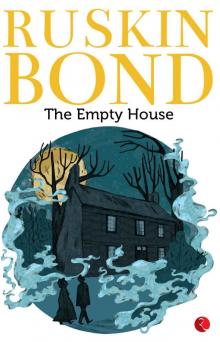 The Empty House
The Empty House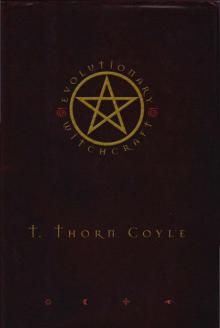 T Thorn Coyle Evolutionary Witchcraft (pdf)
T Thorn Coyle Evolutionary Witchcraft (pdf)![K J Emrick & Kathryn De Winter - [Moonlight Bay Psychic Mystery 01-06] - A Friend in; on the Rocks; Feature Presentation; Manor of; by Chocolate Cake; A-Maze-Ing Death (retail) (epub) Read online](http://freenovelread.comhttps://picture.efrem.net/img/nienyi/k_j_emrick_and_kathryn_de_winter_-_moonlight_bay_psychic_of_by_chocolate_cake_a-maze-ing_death_retail_epub_preview.jpg) K J Emrick & Kathryn De Winter - [Moonlight Bay Psychic Mystery 01-06] - A Friend in; on the Rocks; Feature Presentation; Manor of; by Chocolate Cake; A-Maze-Ing Death (retail) (epub)
K J Emrick & Kathryn De Winter - [Moonlight Bay Psychic Mystery 01-06] - A Friend in; on the Rocks; Feature Presentation; Manor of; by Chocolate Cake; A-Maze-Ing Death (retail) (epub) Next Day of the Condor
Next Day of the Condor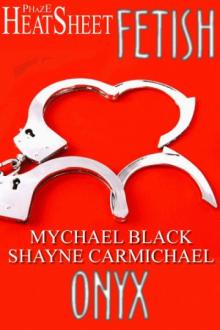 Onyx
Onyx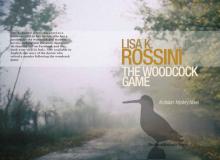 The Woodcock Game: An Italian Mystery Novel
The Woodcock Game: An Italian Mystery Novel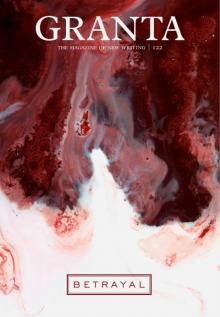 Granta 122: Betrayal (Granta: The Magazine of New Writing)
Granta 122: Betrayal (Granta: The Magazine of New Writing)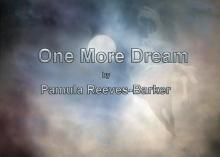 One More Dream
One More Dream Cosa Nostra by Emma Nichols) 16656409 (z-lib.org) (1)-compressed
Cosa Nostra by Emma Nichols) 16656409 (z-lib.org) (1)-compressed Cowboy by J. M. Snyder
Cowboy by J. M. Snyder Colossus
Colossus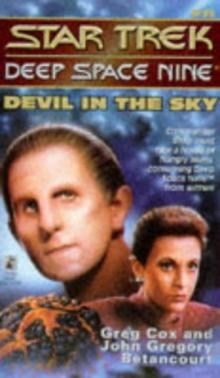 Star Trek - DS9 011 - Devil In The Sky
Star Trek - DS9 011 - Devil In The Sky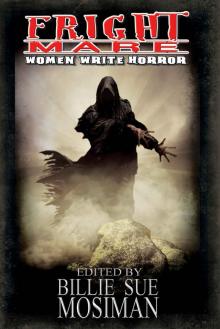 Fright Mare-Women Write Horror
Fright Mare-Women Write Horror The Future Is Japanese
The Future Is Japanese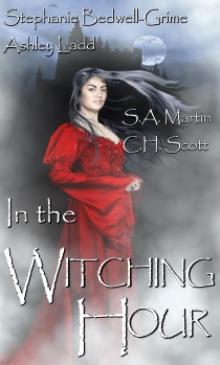 In the Witching Hour
In the Witching Hour Mammoth Books presents Wang's Carpets
Mammoth Books presents Wang's Carpets The Cradle King: The Life of James VI and I, the First Monarch of a United Great Britain
The Cradle King: The Life of James VI and I, the First Monarch of a United Great Britain Stalking Moon
Stalking Moon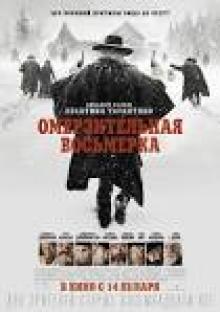 Hostage To The Devil
Hostage To The Devil![Harris, Daisy - Mere Passion [Ocean Shifters 2] (Siren Publishing Classic) Read online](http://i1.bookreadfree.com/i/03/23/harris_daisy_-_mere_passion_ocean_shifters_2_siren_publishing_classic_preview.jpg) Harris, Daisy - Mere Passion [Ocean Shifters 2] (Siren Publishing Classic)
Harris, Daisy - Mere Passion [Ocean Shifters 2] (Siren Publishing Classic) Day, Sunny - Hot in Space (Siren Publishing Ménage and More)
Day, Sunny - Hot in Space (Siren Publishing Ménage and More) Five Books Of The Lives, Heroic Deeds And Sayings Of Gargantua And His Son Pantagruel
Five Books Of The Lives, Heroic Deeds And Sayings Of Gargantua And His Son Pantagruel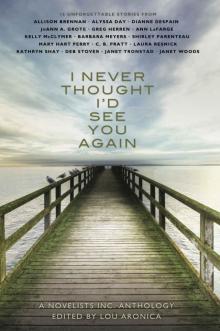 I Never Thought I'd See You Again: A Novelists Inc. Anthology
I Never Thought I'd See You Again: A Novelists Inc. Anthology Billion dollar baby bargain.txt
Billion dollar baby bargain.txt![Chenery, Marisa - Turquoise Eye of Horus [Egyptian Shifters 1] (Siren Publishing Classic) Read online](http://i1.bookreadfree.com/i1/03/26/chenery_marisa_-_turquoise_eye_of_horus_egyptian_shifters_1_siren_publishing_classic_preview.jpg) Chenery, Marisa - Turquoise Eye of Horus [Egyptian Shifters 1] (Siren Publishing Classic)
Chenery, Marisa - Turquoise Eye of Horus [Egyptian Shifters 1] (Siren Publishing Classic) Cat Magic
Cat Magic Star Trek - DS9 - Warped
Star Trek - DS9 - Warped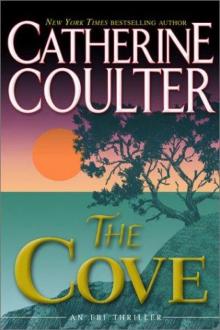 Catherine Coulter - FBI 1 The Cove
Catherine Coulter - FBI 1 The Cove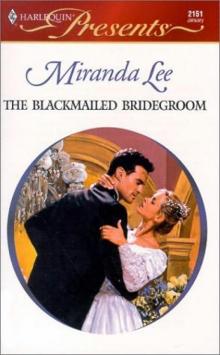 Miranda Lee -The Blackmailed Bridegroom
Miranda Lee -The Blackmailed Bridegroom The Seashell Anthology of Great Poetry
The Seashell Anthology of Great Poetry Dragon Moon
Dragon Moon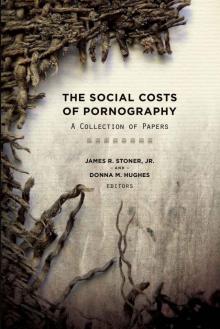 The Social Costs of Pornography: A Collection of Papers
The Social Costs of Pornography: A Collection of Papers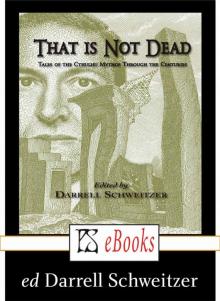 That Is Not Dead
That Is Not Dead Best New Horror: Volume 25 (Mammoth Book of Best New Horror)
Best New Horror: Volume 25 (Mammoth Book of Best New Horror) This Christmas by J. M. Snyder
This Christmas by J. M. Snyder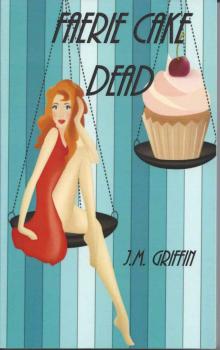 Faerie Cake Dead
Faerie Cake Dead CS-Dante's Twins
CS-Dante's Twins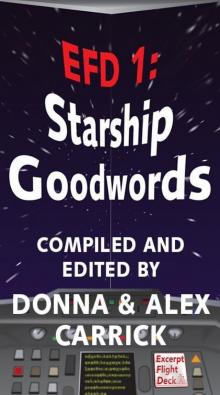 EFD1: Starship Goodwords (EFD Anthology Series from Carrick Publishing)
EFD1: Starship Goodwords (EFD Anthology Series from Carrick Publishing)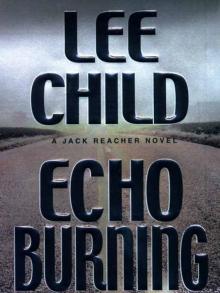 Echo Burning by Lee Child
Echo Burning by Lee Child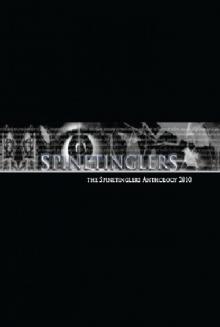 The Spinetinglers Anthology 2010
The Spinetinglers Anthology 2010 Wild Hearts
Wild Hearts Violet Winspear - Sinner ...
Violet Winspear - Sinner ...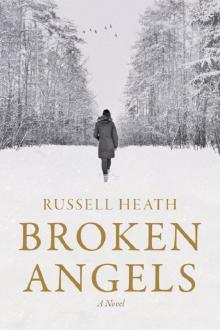 Broken Angels
Broken Angels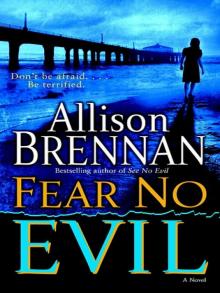 FearNoEvil
FearNoEvil![Santiago, Lara - Range War Bride [Tasty Treats 11] (Siren Publishing PolyAmour) Read online](http://i1.bookreadfree.com/i1/03/30/santiago_lara_-_range_war_bride_tasty_treats_11_siren_publishing_polyamour_preview.jpg) Santiago, Lara - Range War Bride [Tasty Treats 11] (Siren Publishing PolyAmour)
Santiago, Lara - Range War Bride [Tasty Treats 11] (Siren Publishing PolyAmour) 8 Great Hebrew Short Novels
8 Great Hebrew Short Novels This Is How You Die: Stories of the Inscrutable, Infallible, Inescapable Machine of Death
This Is How You Die: Stories of the Inscrutable, Infallible, Inescapable Machine of Death The Steampowered Globe
The Steampowered Globe While We Wait by J. M. Snyder
While We Wait by J. M. Snyder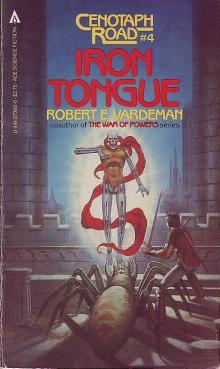 Iron Tongue cr-4
Iron Tongue cr-4![Stieg Larsson [Millennium 02] The Girl Who Played with Fire v5.0 (LIT) Read online](http://i1.bookreadfree.com/i1/03/31/stieg_larsson_millennium_02_the_girl_who_played_with_fire_v5_0_lit_preview.jpg) Stieg Larsson [Millennium 02] The Girl Who Played with Fire v5.0 (LIT)
Stieg Larsson [Millennium 02] The Girl Who Played with Fire v5.0 (LIT)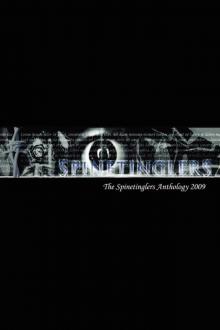 The Spinetinglers Anthology 2009
The Spinetinglers Anthology 2009 Bowles, Jan - Branded by the Texas Rancher (Siren Publishing Classic)
Bowles, Jan - Branded by the Texas Rancher (Siren Publishing Classic) Brown, Berengaria - Vivienne's Vacation (Siren Publishing Ménage and More)
Brown, Berengaria - Vivienne's Vacation (Siren Publishing Ménage and More) Inheritors
Inheritors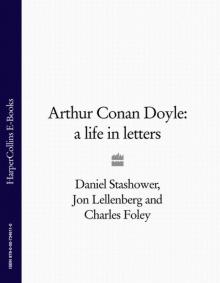 Arthur Conan Doyle: A Life in Letters
Arthur Conan Doyle: A Life in Letters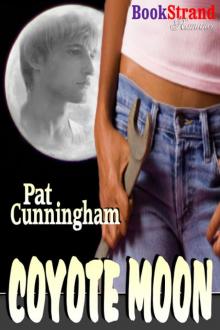 Cunningham, Pat - Coyote Moon (BookStrand Publishing Romance)
Cunningham, Pat - Coyote Moon (BookStrand Publishing Romance) Static Line
Static Line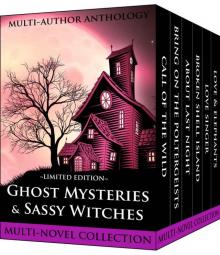 Ghost Mysteries & Sassy Witches (Cozy Mystery Multi-Novel Anthology)
Ghost Mysteries & Sassy Witches (Cozy Mystery Multi-Novel Anthology) Elizabeth Neff Walker - Puppy Love
Elizabeth Neff Walker - Puppy Love Ghosts in the Machine
Ghosts in the Machine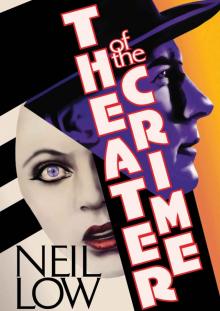 Theater of the Crime (Alan Stewart and Vera Deward Murder Mysteries Book 6)
Theater of the Crime (Alan Stewart and Vera Deward Murder Mysteries Book 6) Red Satin Lips, Book One (The Surrender Series)
Red Satin Lips, Book One (The Surrender Series)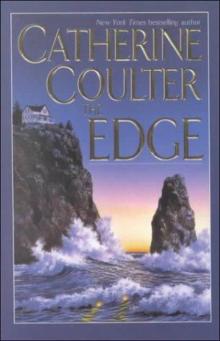 Catherine Coulter - FBI 4 The Edge
Catherine Coulter - FBI 4 The Edge StateoftheUnion
StateoftheUnion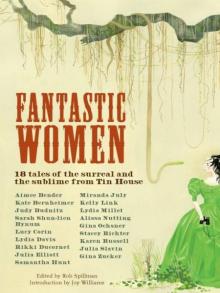 Fantastic Women: 18 Tales of the Surreal and the Sublime from Tin House
Fantastic Women: 18 Tales of the Surreal and the Sublime from Tin House Sara Wood-Expectant Mistress original
Sara Wood-Expectant Mistress original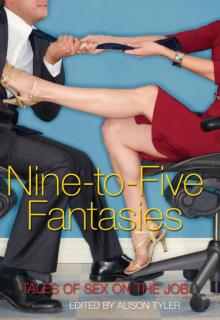 Nine-to-Five Fantasies: Tales of Sex on the Job
Nine-to-Five Fantasies: Tales of Sex on the Job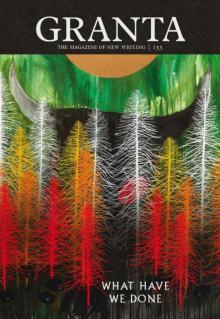 Granta 133
Granta 133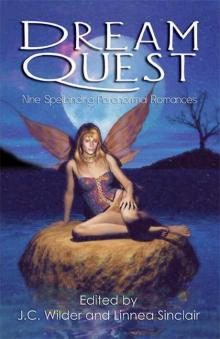 Dream Quest
Dream Quest The Warlock in Spite of Himself wisoh-2
The Warlock in Spite of Himself wisoh-2 Glenn, Stormy - Mating Heat (Siren Publishing Ménage Amour)
Glenn, Stormy - Mating Heat (Siren Publishing Ménage Amour) Davis, Lexie - Toys from Santa (Siren Publishing Classic)
Davis, Lexie - Toys from Santa (Siren Publishing Classic) Once Dead, Twice Shy
Once Dead, Twice Shy McSweeney's Enchanted Chamber of Astonishing Stories
McSweeney's Enchanted Chamber of Astonishing Stories Zombies: Shambling Through the Ages
Zombies: Shambling Through the Ages Baghdad Without a Map
Baghdad Without a Map Banshee Cries (the walker papers)
Banshee Cries (the walker papers)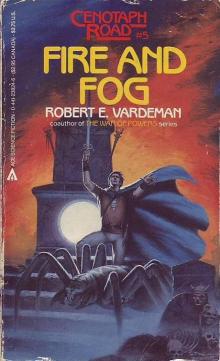 Fire and Fog cr-5
Fire and Fog cr-5 The Twelve Hot Days of Christmas
The Twelve Hot Days of Christmas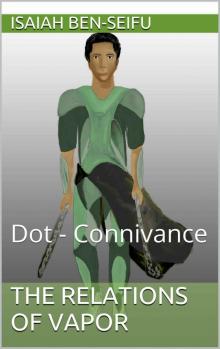 The Relations of Vapor: Dot - Connivance
The Relations of Vapor: Dot - Connivance![Harris, Daisy - Mere Temptation [Ocean Shifters 1] (Siren Publishing Classic) Read online](http://i1.bookreadfree.com/i2/04/11/harris_daisy_-_mere_temptation_ocean_shifters_1_siren_publishing_classic_preview.jpg) Harris, Daisy - Mere Temptation [Ocean Shifters 1] (Siren Publishing Classic)
Harris, Daisy - Mere Temptation [Ocean Shifters 1] (Siren Publishing Classic)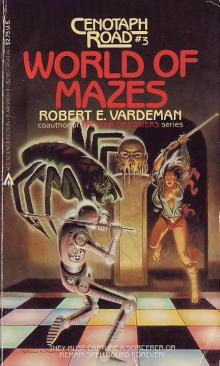 World of Mazes cr-3
World of Mazes cr-3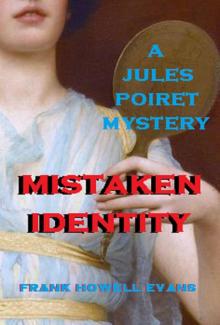 Mistaken Identity (A Jules Poiret Mystery Book 26)
Mistaken Identity (A Jules Poiret Mystery Book 26)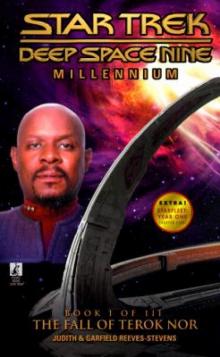 Star Trek - DS9 - Fall of Terok Nor
Star Trek - DS9 - Fall of Terok Nor Not Like I'm Jealous or Anything: The Jealousy Book (Ruby Oliver)
Not Like I'm Jealous or Anything: The Jealousy Book (Ruby Oliver) Skaterboy by J. M. Snyder
Skaterboy by J. M. Snyder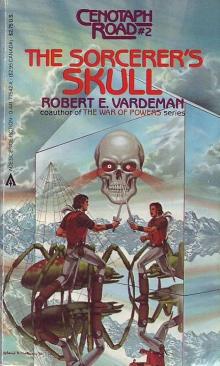 The Sorcerer_s Skull cr-2
The Sorcerer_s Skull cr-2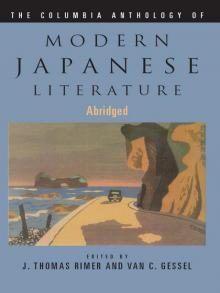 The Columbia Anthology of Modern Japanese Literature (Modern Asian Literature Series)
The Columbia Anthology of Modern Japanese Literature (Modern Asian Literature Series) New Erotica 5
New Erotica 5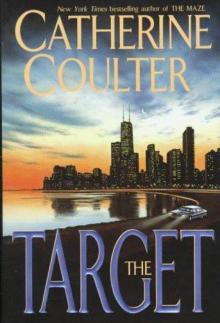 Catherine Coulter - FBI 3 The Target
Catherine Coulter - FBI 3 The Target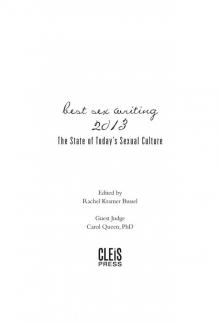 Best Sex Writing 2013: The State of Today's Sexual Culture
Best Sex Writing 2013: The State of Today's Sexual Culture Factoring Humanity
Factoring Humanity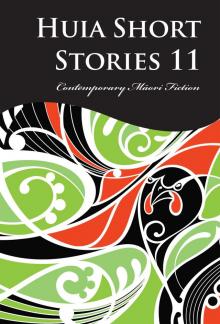 Huia Short Stories 11
Huia Short Stories 11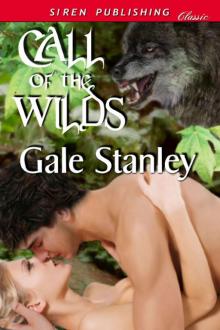 Call of the Wilds
Call of the Wilds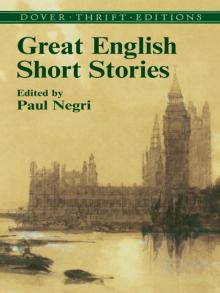 Great English Short Stories (Dover Thrift Editions)
Great English Short Stories (Dover Thrift Editions)![Ramagos, Tonya - Logan's Lessons [Sunset Cowboys 2] (Siren Publishing Classic) Read online](http://i1.bookreadfree.com/i2/04/10/ramagos_tonya_-_logans_lessons_sunset_cowboys_2_siren_publishing_classic_preview.jpg) Ramagos, Tonya - Logan's Lessons [Sunset Cowboys 2] (Siren Publishing Classic)
Ramagos, Tonya - Logan's Lessons [Sunset Cowboys 2] (Siren Publishing Classic)![Morgan, Nicole - Sweet Redemption [Sweet Awakenings 1] (Siren Publishing Allure) Read online](http://i1.bookreadfree.com/i2/04/10/morgan_nicole_-_sweet_redemption_sweet_awakenings_1_siren_publishing_allure_preview.jpg) Morgan, Nicole - Sweet Redemption [Sweet Awakenings 1] (Siren Publishing Allure)
Morgan, Nicole - Sweet Redemption [Sweet Awakenings 1] (Siren Publishing Allure)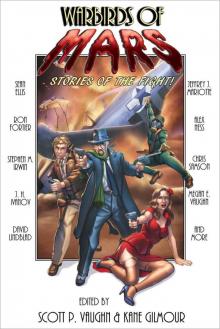 Warbirds of Mars: Stories of the Fight!
Warbirds of Mars: Stories of the Fight! Original Version of Edited Godwin Stories(lit)
Original Version of Edited Godwin Stories(lit) Where The Hell is Boulevard?
Where The Hell is Boulevard?![Chemical [se]X Read online](http://i1.bookreadfree.com/i2/04/13/chemical_sex_preview.jpg) Chemical [se]X
Chemical [se]X Allison Brennan - See No Evil
Allison Brennan - See No Evil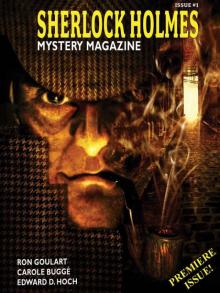 Sherlock Holmes Mystery Magazine #1
Sherlock Holmes Mystery Magazine #1